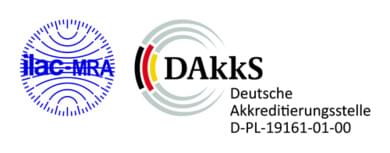Non-destructive analysis of firefighting clothing on asbestos/AMF
Development of a Method for the Non-Destructive Analysis of Firefighters' Clothing for Asbestos and Artificial Mineral Fibers
Dr. Stefan Pierdzig1), Axel Meyer2), Dr. Jochen Kuhl2), Ralf Klaus Blecher1)
1) CRB Analyse Service GmbH, Bahnhofstraße 14, 37181 Hardegsen, Germany
2) MeyerundKuhl Spezialwäschen GmbH, Schmiedewiese 1, 37181 Hardegsen, Germany
Non-destructive analysis of firefighters' clothing (PDF in German, 1.8 MB)
Introduction
In February 2019, in cooperation with MeyerundKuhl Spezialwäschen GmbH, different fabrics (PBI Matrix, Nomex, X55) for the production of firefighters' clothing were contaminated with asbestos and the washing performance of the cleaning process for the asbestos species chrysotile and amosite was assessed by asbestos measurements on these fabrics before and after washing. For this purpose, the fabric samples were incinerated at 450°C in a muffle furnace and the ash was analyzed by scanning electron microscopy (SEM)/X-ray microanalysis (EDX) as a suspension preparation following the guideline VDI 3866, sheet 5, annex B:2017-06 (cf. Blecher et al., 2019).
By this method, the high washing performance could be proven, but since taking fabric samples from operational clothing to check for possible asbestos or AMF contamination is not possible in routine, a method for non-destructive sampling was developed and its effectiveness was tested and validated.
A non-destructive sampling of firefighters' clothing after an operation can only be performed by collecting superficially deposited dust through a suitable medium. In addition, there is the problem that the clothing is often wet or at least damp after an operation.
Classical sampling methods for dust by means of aluminum plates equipped with conductive carbon pads are not suitable because the amount of dust that can be collected is too small. The use of strips of defined length and width made of adhesive film does not appear to be applicable in practice.
Preliminary investigations
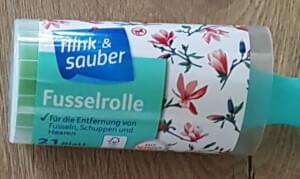
Figure 1: Commercially available lint roller with peelable adhesive sheets

A commercially available lint roller with peelable adhesive sheets was considered as a feasible solution for large-area sampling on firefighters' clothing.
Since a direct analysis of the adhesive surface of the papers was ruled out due to their large area and an assumed only low load of carcinogenic fibers, mineral components of the preparation had to be enriched. For this purpose, the papers were incinerated at 450°C for 8 hours, analogous to classical preparation methods for asbestos analysis - see VDI 3866, Sheet 5.
The ash content of the papers is very high at about 30% by mass, so that the accumulation is still too low for reliable detection of carcinogenic fibers, especially since possible fibers in the microcrystalline ash of calcium carbonate (chalk powder) are difficult to detect and analyze.
Further enrichment of mineral constituents can be performed analogously to VDI 3866, Sheet 5, Appendix B:2017-06 by treating the ash with 10% hydrochloric acid, then suspending the sample in a defined amount of water and filtering through a gold-vaporized core pore filter. This further preparation step enriches mineral constituents by at least 10-fold up to 50-fold (2% acid-insoluble residue in the ash of the adhesive paper) in a largely uncontaminated sample, depending on the load of the filter paper (compare Figures 2 and 3).
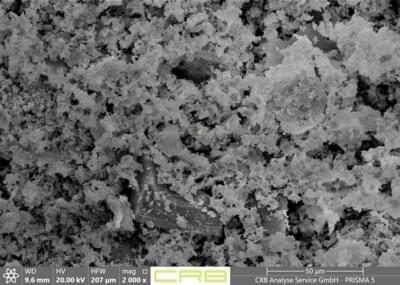 |
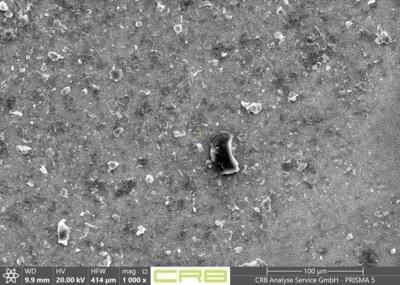 |
| Figure 2: ashed lint roll paper made of microcrystalline chalk | Figure 3: same sample after acid treatment on a gold-vaporized core pore filter |
Test of sampling and analytical procedure on a contaminated firefighter's jacket
Test set-up, the sample collection procedure
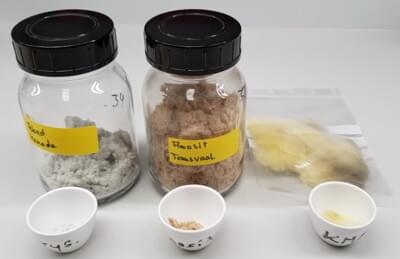 Figure 4: Preparation for contamination of a firefighter jacket
Figure 4: Preparation for contamination of a firefighter jacket
MeyerundKuhl Spezialwäschen GmbH provided a discarded firefighter jacket which was to be exposed to 2 types of asbestos and artificial mineral wool in the simulation of operating conditions.
For this purpose, 100 mg each of chrysotile (white asbestos), amosite (brown asbestos), and artificial mineral fibers (commercially available glass wool) were weighed.
On the test jacket, the neckline, sleeves, and waistband were sealed with adhesive tape and the jacket and the 3 fiber samples were placed in a 100 l drum with a sealable lid.
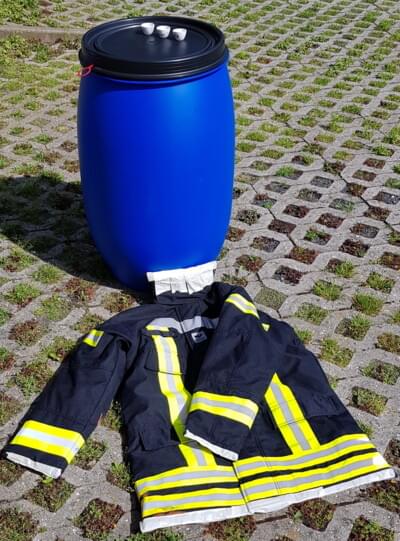
Figure 5: Experimental set-up for exposure of the test jacket to asbestos and AMF
The sealed barrel was rotated, turned, and rolled for 2 min, the jacket was then removed and tested at the following measurement positions.
- sleeve left
- sleeve right
- front side
- back side
the surface of the jacket was rolled with the lint roller. A distance of 60 cm was unrolled 3 times in each of the 4 areas, resulting in a sampled area of about 1800 cm2, i.e. just under 0.2 m2, given the width of the roll of 10 cm.
In a second test step, a liter of water was added to the jacket and the remaining fibers in the barrel (simulation of rain, extinguishing water) and the process of rolling the barrel and sampling the 4 measuring areas was repeated on the wet jacket. This was to clarify whether the lint roller test can also be performed on wet clothing.
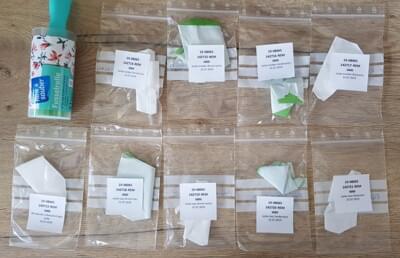
Figure 6: Blank sample and 4 adhesive papers each of the dry and wet sampling
Performance of the analysis
A blank sample and a total of 8 adhesive papers were incinerated at 450°C as described in section 2. A small portion of the ash was prepared directly as a scatter preparation, 50 mg of each of the remaining ashes was treated with acid, suspended in 250 mg of water, and 20 ml of the suspension was filtered through a gold-vaporized core pore filter with 0.8 µm pore size. The analysis of the scatter and filter preparations was carried out according to guideline VDI 3866, sheet 5, whereby only qualitative evaluation was carried out here and no quantification of the measurement results, e.g. in fibers cm-2 substance, was carried out due to the high occupancy density.
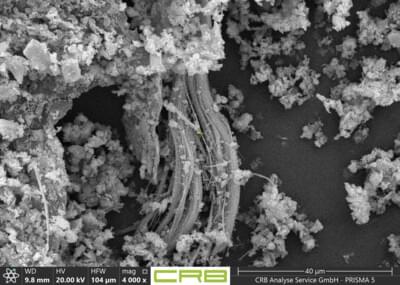 |
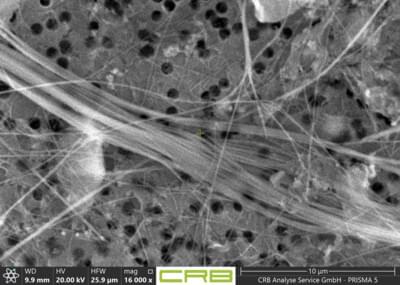 |
| Figure 7: Scatter preparation sleeve left dry - chrysotile | Figure 8: Filter preparation sleeve left dry - Chrysotile |
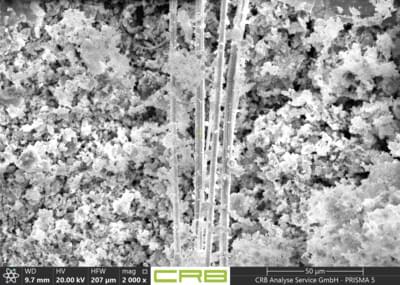 |
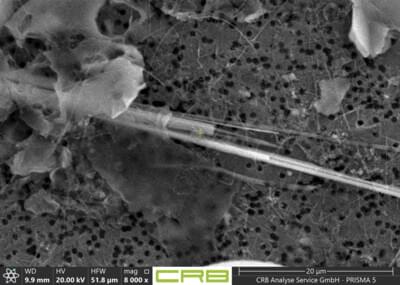 |
| Figure 9: Litter preparation sleeve left dry - Amosite | Figure 10: Filter preparation sleeve left dry - Amosite |
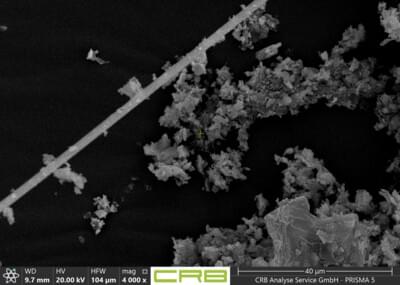 |
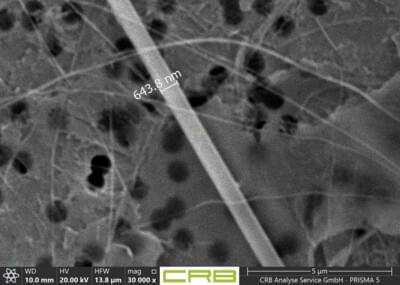 |
| Figure 11: Litter preparation sleeve left dry - glass wool | Figure 12: Filter preparation sleeve left dry - glass wool |
Results: Both types of asbestos and glass wool could be detected in all 8 subsamples.
As expected, the visibility of the individual fibers is much better in the acid-treated and filtered samples than in the scatter preparations (cf. Figs. 7 to 12).
A supposedly small amount of 100 mg each of asbestos and glass wool on a jacket in a 100 l ton leads to a considerable fiber load on the clothing surface and can be reliably detected by a standardized test method for asbestos (VDI 3866, sheet 5) after sampling with a lint roller.
Verification of the test procedure on clothing from an operation with possible asbestos contamination
Simultaneously with the testing of the firefighters' jacket contaminated by us, we received a set of 3 pants and 4 jackets from a real firefighting operation with suspected asbestos contamination via MeyerundKuhl Spezialwäschen GmbH. The garments were individually packed in sealed plastic bags. One jacket was dry, all other garments were damp to wet.
The lint roll test was repeated on these samples with analysis as a litter and as a filter preparation, and additional sampling of the inside of the bags was performed using aluminum plates fitted with conductive carbon pads.
Results
- Swab sample inside the bag: chrysotile asbestos detected in 2 of 7 samples
- Scatter preparation of the ashed adhesive paper: Chrysotile asbestos detected in 6 of 7 samples with increased analytical effort (increased evaluation area)
- Acid-treated ash of the adhesive paper, filter preparation: chrysotile asbestos detected in all 7 samples
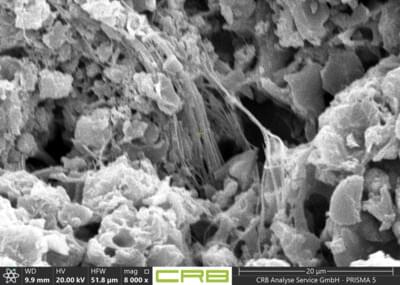 |
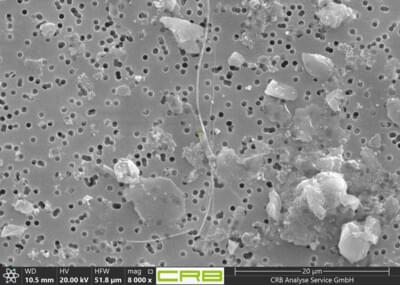 |
| Figure 13: Scatter preparation - chrysotile | Figure 14: Filter preparation - chrysotile |
Evaluation of the washing performance after cleaning of the test jacket by MeyerundKuhl Spezialwäschen GmbH
After completion of the tests, the test jacket was handed over to MeyerundKuhl Spezialwäschen GmbH for cleaning according to their special washing procedure for contaminated firefighters' clothing, cleaned and returned to us.
According to the procedure described under point 3, sleeves left and right, front and back were sampled by means of a lint roller and the samples were examined as litter and filter preparations. In order to obtain a reliable test result, the analytical effort was increased compared to VDI 3866, Sheet 5, and 100 mm2 (of 380 mm2) of surface area was analyzed for each preparation at different magnifications.
Results
In none of the 4 preparations could either of the two types of asbestos or glass wool be detected. Thus, it can be assumed that the washing performed by MeyerundKuhl Spezialwäschen GmbH is complete for all 3 fiber types, or that the remaining contamination is so low that it can no longer be detected by reasonable analytical effort.
 |
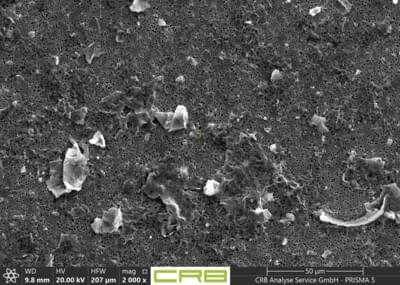 |
| Figure 15: cleaned - sleeve left | Figure 16: cleaned - sleeve right |
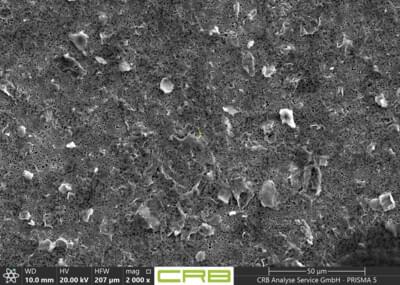 |
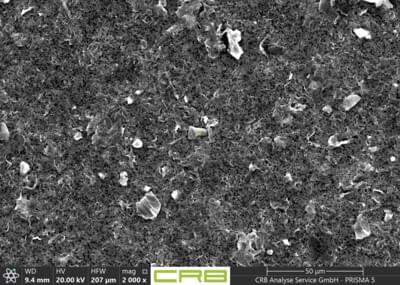 |
| Figure 17: cleaned - front side | Figure 18: cleaned - back side |
Assessment of the detection sensitivity of the method
All approaches for estimating the detection sensitivity of a method for asbestos analysis from the material or dust samples available here are mass-based (cf. VDI 3866, sheet 5, BIA/IFA method 7487, ISO 22262-2).
Thus, the detection sensitivity of 0.001 mass percent asbestos/FMA or better in the ash can be assumed for the test method used here in accordance with VDI 3866, Sheet 5, Appendix B:2017-06. However, this initially says nothing about the exposure of the clothing surface to fiber structures (single fibers, fiber bundles) and the possible fiber release potential after use.
 Table 1: Calculation of the detection limit for the analysis of asbestos and FMA on firefighters' clothing.
Table 1: Calculation of the detection limit for the analysis of asbestos and FMA on firefighters' clothing.
Between 4 and 16 fiber structures could be detected on the 7 specimens of the examined firefighters' clothing (cf. chapter 4) from a real operation under standard conditions of an asbestos examination according to VDI 3866, sheet 5 (evaluated area 43 mm2 filter area at 50-, 200-, 1000- and 2000-fold magnification on the evaluation screen). According to a first assessment and in comparison with the filter preparations of the jacket artificially exposed to asbestos and FMA with several thousand fiber structures per mm2, this seems to represent rather small contamination, which, however, can be reliably detected.
To calculate the detection sensitivity of the method, Poisson statistics are used in accordance with VDI 3492, Measuring Indoor Air Contamination. This states in a simplified form that, for a count result of "0 fibers", the actual value lies between 0 and 2.996 fibers with 95 % probability.
From the parameters for sample preparation and analysis (cf. Table 1), the upper Poisson value 3 (for a count result of 0) results in detection sensitivity of 0.4 fibers per cm2, or 3682 fibers per m2 of substance.
Summary
Tests on clothing from a fire department incident with possible asbestos contamination, as well as a test jacket exposed to 3 types of fibers, show that the use of a lint roller is a suitable method for collecting mineral dust for subsequent analysis. This form of sampling works both with dry and on wet/damp work clothing.
With the guideline, VDI 3866, Blatt5:2017-06, a suitable and reliable analytical method exists for the accumulation of mineral, fibrous components in the sample by ashing, acid treatment, and suspension/filtration, and for the detection with sufficient sensitivity by MEB/EDX in the filter preparation.
The detection sensitivity of the method, estimated via Poisson statistics, is 0.4 fiber structures per cm2 of substance.
Literature
Blecher, Kuhl, Meyer & Pierdzig - Testverfahren zur Waschleistung / Dekontaminierung von Feuerwehrtextilien bei Asbest-Belastung, 2019
IFA/BIA 7487:1997-04 - Verfahren zur analytischen Bestimmung geringer Massengehalte von Asbestfasern in Pulvern, Pudern und Stäuben mit SEM/EDX
ISO 22262-2:2014-09 - Luftqualität - Feststoffe - Teil 2: Quantitative Bestimmung von Asbest mit gravimetrischen und mikroskopischen Verfahren
VDI 3492:2013-06 - Messen von Innenraumluftverunreinigungen - Messen von Immissionen - Messen anorganischer faserförmiger Partikel - Rasterelektronenmikroskopisches Verfahren
VDI 3866, Blatt 5:2017-06 - Bestimmung von Asbest in technischen Produkten - Rasterelektronenmikroskopisches Verfahren



